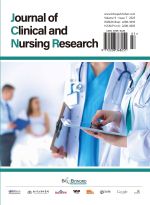Abstract
Stroke, as an acute cerebrovascular disease, is characterized by high incidence, high mortality, and high disability rate, thus attracting great attention from the medical community. Medication literacy, on the other hand, is an active, comprehensive, and sustainable concept of health management, which includes the learning of health knowledge and the guidelines for healthy behaviors, and directly affects the treatment effect and health safety of patients. This paper conducts an in-depth study on the current research status of medication literacy in stroke patients, analyzes its influencing factors, and explores specific intervention strategies from multiple perspectives, aiming to provide a theoretical reference for improving patients’ medication management ability and optimizing clinical prognosis.
References
Chesser A, Keene Woods N, Smothers K, et al., 2016, Health Literacy and Older Adults: A Systematic Review. Gerontology & Geriatric Medicine, 2: 369–375. doi:10.1177/2333721416630492.
Zhong Z, Ma K, Shen Z, et al., 2018, Research Status of Hypertension Medication Literacy. Chinese Journal of Hypertension, 26(4): 185–189.
Sauceda JA, Loya AM, Sias JJ, et al., 2012, Medication Literacy in Spanish and English: Psychometric Evaluation of a New Assessment Tool. Journal of the American Pharmacists Association, 52(6): e231–e240.
Schapira MM, Walker CM, Cappaert KJ, et al., 2012, The Numeracy Understanding in Medicine Instrument: A Measure of Health Numeracy Developed Using Item Response Theory. Medical Decision Making, 32(6): 851–865.
Shreffler-Grant J, Weinert C, Nichols E, 2014, Instrument to Measure Health Literacy About Complementary and Alternative Medicine. Journal of Nursing Measurement, 22(3): 489–499.
Han Y, Li B, Tang J, 2023, Current Status of Medication Literacy and Analysis of Influencing Factors Among Stroke Patients. South China Journal of Preventive Medicine, 49(12): 1526–1529.
Chen Z, Chen X, Wei Y, et al., 2024, Current Status of Medication Literacy and Analysis of Influencing Factors Among Home-Dwelling Stroke Patients. Military Nursing Journal, 41(11): 1–4.
Hou L, Li Y, Liu S, et al., 2024, Current Status of Medication Literacy and Analysis of Influencing Factors Among Middle-Aged and Elderly Stroke Patients in Communities. Journal of Nursing Science, 39(3): 5–9.
Xiao M, 2024, Study on the Correlation and Mediating Effect Between Illness Perception and Medication Literacy in Elderly Patients With Common Chronic Comorbidities, thesis, Dalian Medical University. doi:10.26994/d.cnki.gdlyu.2024.001364.
Liu M, 2023, Study on the Correlation Between Health Literacy, Activation, Discharge Readiness and Post-Discharge Health Behaviors in Stroke Patients, thesis, Huzhou University. doi:10.27946/d.cnki.ghzsf.2023.000192.
Yan Z, Su H, Jin Z, et al., 2023, Current Status of Secondary Prevention and Influencing Factors in Patients With Ischemic Stroke. South China Journal of Preventive Medicine, 49(2): 170–173.
Luan W, 2022, Construction and Application of Medication Literacy Intervention Program for Elderly Patients With Chronic Comorbidities in Communities, thesis, Zhengzhou University. doi:10.27466/d.cnki.gzzdu.2022.004285.
Sun H, 2020, Study on the Correlation Between Health Literacy, Patient Compliance and Quality of Life in Stroke Patients, thesis, Shanghai University of Traditional Chinese Medicine. doi:10.27320/d.cnki.gszyu.2020.000203.
Zhao X, 2017, The Influence of Health Literacy on Medication Beliefs and Medication Compliance in Patients With Ischemic Stroke, thesis, Yanbian University.
Li S, Liang X, Lu G, 2024, Correlation Between Rehabilitation Treatment Compliance and Health Literacy and Self-Management Behavior in Stroke Patients. Journal of Bengbu Medical College, 49(3): 401–404.
